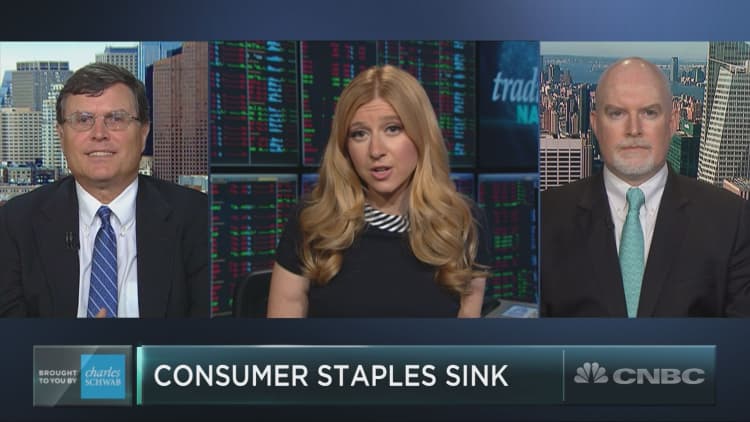
The consumer staples sector is at the bottom of the for 2018 and tracking for its worst yearly performance in a decade. The charts are so bad they might actually be good, says one market watcher.
"Look at the long-term chart, it looks absolutely horrible," said Matt Maley, equity strategist at Miller Tabak, on CNBC's "Trading Nation" on Tuesday.
"It's broken below its trend line going all the way back to the crisis lows of 2009," Maley added. "It's broken below its 2017 low, its 2016 low, its 200-day moving average."
The XLP consumer staples ETF is down nearly 13 percent for the year, trailing the S&P 500's more than 1 percent gain. The ETF has not been able to recover to a price above its declining 200-day moving average since falling below that support level in mid-February.
The charts may look ugly, but the severity of the sector's losses could set the group up for a bounce, Maley said.
"The one thing that we see now is that in the most recent decline, volume has kind of petered out, so I'm starting to wonder if this thing's getting washed out a little bit," he said. "If you look at its weekly RSI chart, it's as [oversold] as it's been since, again, those 2009 lows."
The XLP's relative strength index, a momentum indicator, declined to 28.3 at the beginning of May, but rose back slightly to 36.4 on Wednesday. A level below 30 generally indicates oversold conditions.
"I'm kind of hoping the thing can bounce back a little bit but with so many stocks flat on their back it's hard to be real confident about that," said Maley.
The headwinds facing the sector look difficult to overcome, according to Dennis Davitt, partner at Harvest Volatility Management.
"They've been hit by higher interest rates — people feeling that they're not going to be as attractive so people are moving out of those stocks and moving into maybe just plain old debt-yielding instruments — and higher commodity prices," Davitt said on Tuesday's "Trading Nation."
The XLP ETF was up 0.4 percent Wednesday in its first positive session of the week. The group is tracking for a nearly 2 percent decline for May.





